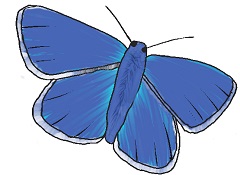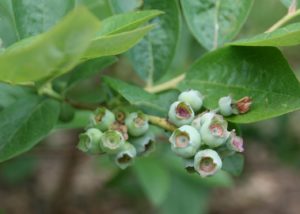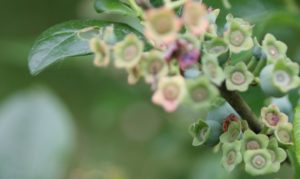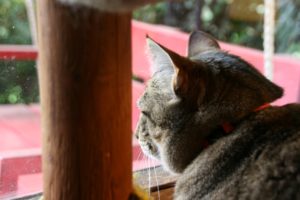Being a gardener means taking what the world gives you. Last week our little corner of Oregon lurched out of chilly early spring weather straight into a blast of summertime. In the house, that meant melted cats and a kid who needed an emergency shoe shopping trip. In the garden, that meant I could finally stop worrying about the tomatoes and melons and watch them grow. (I think my pumpkin plant doubled in size last weekend.)
It also meant that flower season was really here and that summer fruit was close at hand.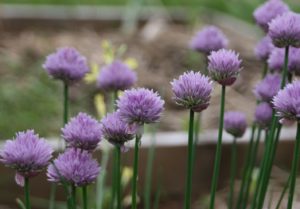
The blueberries bloomed weeks ago, but now you can really see their fruit developing. Like many kinds of fruit trees, blueberries require a cross-pollinator to set fruit. We’ve planted four different kinds of blueberries around our house who are all supposed to bloom at the same time, but for whatever reasons, their bloomtimes don’t always overlap. You can see that this bush is fruiting up nicely:
But its buddy to the right didn’t do quite so well:
The little flat star-shaped spots are the remnants of unpollinated flowers.
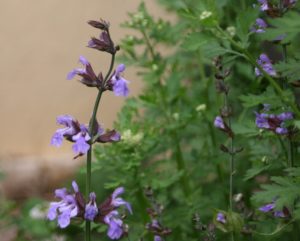 In some cases, the surge of new flowers is very welcome. Bees love these sage blossoms, and if the plant actually produces seeds, maybe I’ll see some more sage plants next year.
In some cases, the surge of new flowers is very welcome. Bees love these sage blossoms, and if the plant actually produces seeds, maybe I’ll see some more sage plants next year.
But these turnip flowers are a bit disheartening. I pulled up half of the turnip crop when I saw it was going to seed. We enjoyed the delicious gre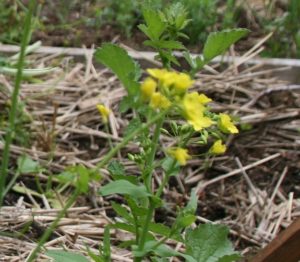 ens, but the spicy turnips themselves never got a chance to develop. (Behind the turnips, you can just see the nubbly top of a radish beginning to bud. No radishes? May salads just won’t be the same.)
ens, but the spicy turnips themselves never got a chance to develop. (Behind the turnips, you can just see the nubbly top of a radish beginning to bud. No radishes? May salads just won’t be the same.)
On our last trip to the garden, I showed pictures of the apple tree in bloom and the great green expanse of the strawberry and clover bed. I’m not quite as in love with that bed as I was the last time I posted. The clover is incredibly vigorous, and I’m spending an awful lot of time cutting it back to give the strawberries more sunshine. The berries on the edge of the clover thicket are doing great. Here’s a beautiful berry enticing me with a hint of red:
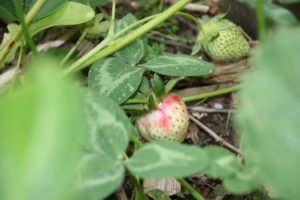 The other strawberries are beginning to develop fruit, but are definitely lagging a little behind, and the plants are a bit smaller than the giants on the edge of the clover field. But on the plus side, the plants didn’t clamor for water even during our 90 degree heat blast. Strawberries have pretty shallow root systems that demand a lot of water, so that’s a major benefit.
The other strawberries are beginning to develop fruit, but are definitely lagging a little behind, and the plants are a bit smaller than the giants on the edge of the clover field. But on the plus side, the plants didn’t clamor for water even during our 90 degree heat blast. Strawberries have pretty shallow root systems that demand a lot of water, so that’s a major benefit.
I like to think of my garden as an experimental plot, so I’ll keep watching the strawberries and cutting back the clover to see how the fruit develops and tastes.
I’ll leave you with just one last shot. The garden is a place for people, plants, insects, and animals of all stripes. One of my favorite animals had to take a bit of a break from the garden after having a major asthma attack. Here he is studying the great outdoors and wishing he could spend more time out there:
